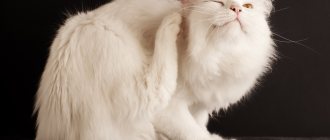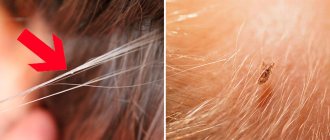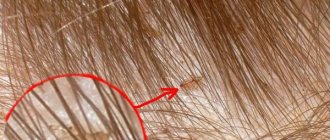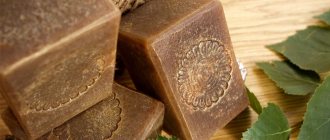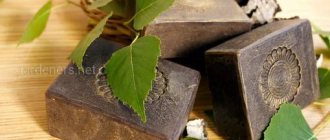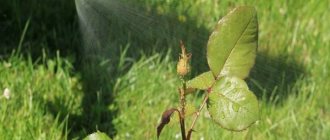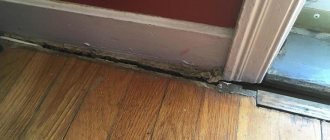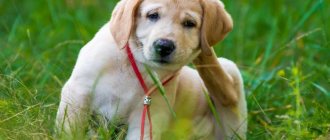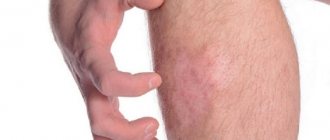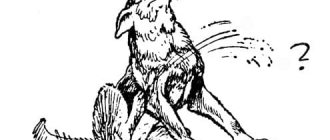Tar soap is traditionally considered to be a natural and safe alternative to modern insecticidal preparations for ridding dogs of fleas. Yes, indeed, tar soap will not harm your pets, but it also has little benefit. In terms of its effectiveness, it is noticeably inferior to synthetic insecticides. It is not recommended to use it, just like laundry soap.
What it is?
Soap with tar is indeed successfully used as a cosmetic and medical product. It can treat dermatitis and skin rashes.
Under its influence, wounds, cracks and scratches on the skin heal faster - this happens because birch tar (the main component of soap) promotes epithelial regeneration . Hair washed with it begins to shine and falls out less. It is also indicated for pediculosis.
Yes, at first tar soap was considered as a remedy to relieve the itching from lice bites.
It did not work as a remedy against most pests. But the tradition of washing your hair with it when lice appear has created a myth about its healing properties , which has acquired new details: tar soap poisons not only lice, but also fleas and even destroys ticks!
To understand how true this information is, it is worth knowing how the components of tar soap affect parasites.
Degtyarnoe
It is based on birch tar. Thanks to him, this hygienic product not only heals wounds, but also smells bad. It also contains:
- sodium salts of animal fats;
- sodium salts of vegetable oils;
- water;
- thickeners;
- preservatives;
- salt.
Among the medicinal properties:
- drying;
- exfoliation of keratinized particles;
- disinfection;
- relieving irritation;
- getting rid of acne;
- reduction of eczema;
- fungus control.
Composition and effects
Tar soap looks like dark brown bars, opaque, with a sharp, tart odor. Many people find it unpleasant, but some people like it. Main components of soap:
- Birch tar – soap can contain up to 10%. It is produced by squeezing the extract obtained from birch. It is this that gives the product its specific smell and is also famous for its medicinal properties. Tar is used to produce not only soap, but also a number of medicines, for example, Vishnevsky ointment for the treatment of wounds, burns and suppurations. This element can really help against fleas:
- Its very smell has a depressing effect on parasites - they rush to get away from it. Insects are sensitive to odors. Through them they find food and a mate for mating. The overly strong smell has a disorienting effect.
- Tar contains benzene , which paralyzes the nerve centers of insects. They will not die, but will become lethargic and begin to move chaotically. This will make them easier to detect and comb out.
- Sodium salts. They are beneficial for the skin because they normalize its water-salt balance and protect it from excessive evaporation of moisture. This property is also very important for the delicate skin of a dog.
- Phenol and alkali. They affect insects, causing them direct harm - burns. However, they are not capable of destroying them: the bodies of lice and even their eggs are protected by a durable shell. But the microbes will die after such washing.
It may also contain citric acid, Diethylene Glycol (thickener), sodium chloride, palm oil and water. The composition of tar soap varies depending on the manufacturer , but this is not so important, because the main component - tar - remains unchanged.
IMPORTANT: Diethylene Glycol (thickener) can be harmful if ingested. Therefore, if you decide to wash your pet with tar soap, make sure that he does not swallow the foam.
Processing procedure
It is necessary to determine in advance where the procedure will be carried out - a basin, a bath.
- Pour some warm water into a separate container, throw in a piece of soap, or grate it. Wait until it completely dissolves.
- Wet your pet's fur with warm water and pour soapy water on top. Lather thoroughly. You need to lather carefully, making sure that the product does not get into your eyes, nose, or mouth.
- It is up to the owner to decide what to do next. A small pet can be wrapped in a towel and held in your arms until the product takes effect. Large dogs are muzzled.
Treating a pet with tar soap
Tar against fleas in cats should act for at least 15 minutes. Leave tar soap for kittens against fleas for at least 10 minutes. Leave the dogs for at least half an hour. The maximum effect of the drug is 45 minutes. Exceeding the duration is not recommended.
Can it be used to protect against fleas?
Tar soap cannot be considered a complete insecticide. But it can still bring some benefit: it won’t kill, but it will repel fleas . At the same time, special products for animals will solve the problem faster and more reliably.
Whether or not to wash a dog with it is up to each animal owner to decide for himself. To make it easier for you to make this choice, we list the main advantages and disadvantages .
pros
- Tar soap boasts a natural composition , which most special shampoos do not have.
- Does not cause allergies , does not penetrate into the blood and milk. You can absolutely safely use it when washing puppies (after 1 week of life) and pregnant dogs.
- There are no side effects - no nausea, no vomiting, no loss of appetite or lethargy, no changes in behavior. You also don’t have to worry about rashes (which can’t be said about special shampoos).
- You can wash your dog with tar soap not only for small abrasions and scratches, but even for open wounds , eczema or dermatitis.
- Maintains normal salt-water balance of the skin, but special shampoos for dogs can dry out the skin.
- Can be used as often as needed without harming the dog's health.
- Inexpensive product (again, compared to special products).
- Safe for humans and convenient to use.
REFERENCE: allergies to tar almost never happen. Other components of the product - thickeners and preservatives - can cause irritation, but in this case it is enough to change the brand of soap.
Minuses
- As already mentioned, the main effect on insects is the unpleasant smell of tar . Fleeing from it, fleas will escape from the animal, including onto your floors, carpets, sofas and chairs. They will live well there for some time, and when the smell disappears, they will attack the dog again.
- An unpleasant odor affects more than just fleas. The owner and his pet will also have to endure a specific aroma. And you shouldn’t think that it’s enough to endure it once - to get rid of parasites you will have to spend a lot of time and effort . Significantly more than when using special means.
- Soap that gets into your pet's eyes and nose will also not add a pleasant feeling to him: it burns strongly .
- Well, the most important thing: tar soap has no effect on insect eggs . So, soon after the procedure, new parasites will hatch on the dog, which will ruin all your efforts.
So, tar soap will be a real salvation for dogs with allergies, babies, pregnant bitches and those individuals who can be harmed by a special shampoo containing more aggressive substances. It is absolutely harmless.
Pediculosis in children: an endless story
Home — Social networks — Pediculosis in children: an endless story
Pediculosis in children has long ceased to be a purely social phenomenon. According to statistics, in the fall the main centers of outbreaks of head lice are schools. And lice are brought there not by the children of alcoholics, but by tanned and rested children from wealthy families on distant shores. Most cases of head lice are registered in children who have been on vacation in England, France, that is, in developed European countries. How is this possible? I'll tell you now. And at the same time I’ll tell you my story of treating head lice in a child with long thick hair.
PEDICULOSIS IN OUR CHILDREN - LET'S NOT BE POODS
Whatever you say, lice in children, or, more simply, “lice,” is a parasitic disease that brings not only physical discomfort, but also certain “moral suffering.” In our society, there is a widespread belief that lice is a disease of unscrupulous people, homeless people and other “rabble.” It is believed that in a decent family a child cannot get sick with anything like this. And if lice are discovered, this fact must be hidden from all friends and neighbors. Otherwise, what a shame...
Such silence ends with lice wandering from one child’s head to another with complete impunity. It is not possible to find out the source of lice infestation, because even good neighbors will not tell you that their children (your child’s friends) returned from summer vacation with lice. In the best case, you will receive this valuable information after this becomes your reality. Then, as more experienced neighbors, they will begin to give valuable advice on how to treat pediculosis.
“Your girl has lice,” the class teacher said, taking me aside on the second day of school. After which I found myself with a note from the school nurse, which included a diagnosis of head lice and a ban on attending classes without a certificate from the clinic. “God, where from?!” — that’s all I could say then. I was very ashamed...
And in vain. Later I found out that head lice in children is not as rare as people think. Every autumn, at the beginning of the school year, lice are found on average in 15-20 children per thousand primary schoolchildren, and this is only what is officially registered by clinics. After all, many parents carefully hide the fact of infection from others because of shame: they don’t even go to the pediatrician, but treat lice at home with all sorts of folk remedies.
In the fall, schools become the main foci of head lice. Lice are brought into the classroom mainly by children from wealthy families. According to Rospotrebnadzor, in 2006, the incidence of head lice in children after the summer jumped 2.5 times compared to previous years, primarily due to those who traveled abroad in the summer. But these are data from 2006, and not some modern propaganda in retaliation for sanctions.
PEDICULOSIS IN CHILDREN IN EUROPE IS THE NORMAL, BUT YOU DIDN’T KNOW?
Old lady Europe is the one who most willingly shares her lice with us. Moreover, not just any Bulgaria or Montenegro. It turns out that the most lice-infested country in Europe is Great Britain. Pediculosis in children in English schools and camps is common. At the same time, no one declares a quarantine and, imagine, no one isolates lousy children. In summer camps, where children are under the supervision of teachers, they are simply treated with special anti-lice products, which, by the way, are very effective, according to the reviews of the “victims.” If lice are found on children during the school year (the peak is in the fall), the parents of the students only receive notifications that there is lice at school. What they do with this information is their own business. The teacher can only recommend that they treat the child for lice, because it... interferes with the student’s ability to work in class, and not at all because he can infect other children. As a result, in the Kingdom of England, primary school students, regardless of their social status, get lice up to 5 times a year! And you say “princesses don’t poop...”
In Denmark, head lice is also “all right.” To such an extent that “lousy Saturdays” are held in this country, promoting the fight against these bloodsuckers. Moreover, it was in Denmark that a special comb-shaped attachment for a vacuum cleaner was invented to collect lice from heads. The author of the invention is a school teacher. Can you imagine the scale of lice if lice can already be removed from children with a vacuum cleaner?
In France, if you believe our compatriots who went there for permanent residence, lice are also treated without validol: well, a child has lice, so what? “I often stand at a traffic light next to a pharmacy. The window display changes every season. In winter they advertise vitamins, in spring - weight loss products, in summer - sunscreens. And in the fall, the window is decorated with a scout with a bullhorn. He trumpets: “The lice are back!” Sometimes, instead of a scout, the window depicts giant lice, which are being chased by giant cans of all kinds of anti-lice poison,” wrote a Russian mother living in Toulouse on one of the forums. Her own children contracted head lice in the first week of the school year. But naive Russian parents only realized this when leaflets were distributed to everyone at school: “Dear parents, there are lice in the school, treat your child’s head, as well as hats and bed linen.” And, please note, there is no talk of any quarantine, or of any removal of children with head lice from school.
No less indicative is another story of Russians, whose children became infected with pediculosis during a trip to Spain. While traveling around the country, they were supposed to stay with friends, but found it inconvenient given the circumstances. Imagine their surprise when their friends shrugged their shoulders in response and said: “What’s wrong with that? Stop by our pharmacy on the way.”
Why is this attitude towards pediculosis in Europe? Perhaps because these days all the diseases that lice have been carriers of for centuries have been practically defeated. The lice bite itself is not dangerous to humans if it is not infected. But if not... In the past there was even a sign: lice appear in the house of a deceased person. Creepy, right? But if we remember that in those distant times lice were carriers of typhus, then the logic of this “sign” becomes obvious. Fortunately, now the likelihood of catching this infection from lice has been reduced to zero. So many Europeans treat lice like mosquitoes. And they begin to remove them only when they already cause significant discomfort.
Our situation is completely different. Pediculosis in our society is like leprosy before. If you tell someone, ten meters of a sanitary zone around the child will be provided. In this case, you are obliged to isolate the child from society, and while the doctor, inspecting the results of treatment for head lice, finds at least one live nit on the hair, there can be no talk of any visit to school or kindergarten. So, we sat at home to get treatment.
PEDICULOSIS IN CHILDREN: WHAT TO TREAT IF YOU ARE “LUCKY”
In my childhood, treatment for head lice was limited to the use of dust, kerosene and tar soap. I remember how I wanted to climb the wall from the smells of these products. Fortunately, both dust and kerosene, despite their effectiveness, are today considered unjustified barbarism. And tar soap, contrary to its image, is considered useless. From the pediatrician I received a list of how to treat head lice in children with the words that all drugs work, choose what you can afford.
Of course, the simplest and most effective method of dealing with lice in a child is shaving. Insects do not live on a bald head and, most importantly, cannot reproduce, since they attach their eggs in the root zone of the hair. No hair - no nits, no nits - no new lice. If I had a boy, the story would end there... But shaving a girl, and a first-grader at that, is humiliating. My daughter’s hair was thick and long, and I decided that I would not cut my child’s hair short, much less shave him bald.
Of course, this decision made our fight against head lice more difficult. We spent 2 weeks completely removing this infection. I think if I had at least some experience in this area, and I would have thought even for a minute that my clean child was scratching his head because there were lice, the scale of the disaster and the time frame for its elimination would have been less. But I was captive of the mass illusion that well-groomed children at home these days do not get lice. The result of this misconception resulted in 14 days of hassle.
Initially, we were determined that we could get rid of lice in a week at most. The treatment plan for head lice was as follows: kill lice and nits using treatment, comb out the hair, re-treat on the seventh day and show the doctor a clean head. But it was not there. During the examination, the pediatrician discovered several living nits (they, you know, make a characteristic cracking sound under the nails, unlike dead ones). And she sent us to receive further treatment. It was then that I realized that the selected remedy for head lice, even the best one according to reviews, was not enough.
What helped us cope with head lice in a child with long hair:
1. TREATMENT WITH PHARMACEUTICAL PRODUCTS FOR PEDICULOSIS.
You should not believe promises that the product will remove both lice and nits. From my own experience I can responsibly declare: this is not so. Pharmacy chemicals do not kill nits! They act on lice by suffocating, paralyzing and dehydrating living parasites. But nits are eggs, they don’t breathe (contrary to the claims of some advertising brochures), so they don’t care about such chemistry. Most drugs for the treatment of pediculosis, which are written “destroy lice and nits,” actually kill only lice, and you are asked to comb out live nits by hand with a special comb included in the kit. If you carefully study the composition of such preparations for head lice, then, in addition to the main active ingredient, they contain oils or alcohols that soften or dissolve the glue that securely attaches nits to the hair, making them easier to comb out. I personally have not found any drugs that actually kill nits on our pharmacy shelves. There are enough of them stated. But the actual effectiveness is questionable to spend the family budget on them. I’ll tell you below how we “peeled off” the nits.
Of the commercial products for the treatment of pediculosis, I will single out two at once, because their alternate use on the advice of a second pediatrician, whom we came to after the first week of unsuccessful treatment, helped us. Firstly, this is the Para Plus spray, which contains not one, but three active ingredients. Secondly, Paranit shampoo (namely shampoo), contains mineral oil and does not contain insecticides, so it combined perfectly with the first remedy without the danger of poisoning the child along with lice. The advantage of this shampoo is the fine comb included in the kit. It was with this that we combed out the nits after treatment. We alternated Para Plus and Paranit at intervals of 3-4 days, instead of using one at a time every week.
2. COMBING OUT LICE AND NITS.
Combing for lice is the only 100% way to remove lice and nits. Moreover, without combing out nits, all your efforts to combat lice will be in vain. After treating your head with a special product, be sure to comb your hair with a thick comb (they are sold in pharmacies both separately and as a set with various medications for head lice). This way you can understand the scale of the infestation and monitor the dynamics: how many lice are combed out the first time, how many after a few days, after a week (ideally, not a single one). I do not recommend spending money on expensive miracle lice combs advertised on the Internet. There is nothing special about them except the price. This is such a “mess from an axe” - without treating the hair with products that soften the nit glue, all these combs are ineffective. And after treatment, any metal nit comb that comes with the lice remedy can handle combing.
After trial and error, we found that a vinegar solution works best on glue. Cheap and cheerful. The essence of the method is simple: take 9% table vinegar (under no circumstances use vinegar essence!) and dilute it in a ratio of 1:2, that is, 1 part vinegar to 2 parts water. This solution is used to treat dry hair along its entire length, starting from the roots. The easiest way to apply the vinegar solution is with a sponge. In this case, you need to try to ensure that as little vinegar gets on the scalp as possible. But if it hits, it’s tolerable. After treatment, all hair should be hidden under a bag or rubber swimming cap. This is done so that the vinegar does not evaporate ahead of time. Action time: 30 minutes. On the Internet you can read recommendations to keep the vinegar solution on your head for at least an hour. But, in practice, half an hour is enough to get the desired effect without burning the child’s scalp in a vinegar bath. After 30 minutes, carefully comb your hair from roots to ends with a special comb. Important: the combing procedure after vinegar is best done in the bathroom. This is done so that adult lice, stupefied by vinegar, do not fall onto clothing or the floor when combed out, which would lead to re-infection. After each pass through the hair, the comb should be rinsed with running water so as not to return the newly combed nits back into place. It is better to carry out treatment once every 3-4 days. Especially if you decide to follow the same difficult path as we did - at all costs to preserve your child’s long, thick hair. By the way, instead of table vinegar, you can use 3% apple cider vinegar. Or hellebore water, which also has a beneficial effect on hair. But at that time, hellebore water turned out to be in short supply in pharmacies. So, we made do with table vinegar.
3. WASHING AND TREATING ALL THINGS.
Everything that could be washed went into the wash at 60 and 90 degrees (lices and nits die at 50-55 degrees, and at 40 you just give them a bath). Everything that could not be washed in hot water, or simply could not be put into the washing machine, was treated with A-Par spray: pillows, mattresses, a sofa, a carpet in the nursery, hats, etc. The floors throughout the apartment and other surfaces were washed with a solution of table vinegar.
AGGRAVATING CIRCUMSTANCE: PEDICULOSIS AND BREASTFEEDING
At the time when my eldest daughter was diagnosed with lice, the youngest was only 2 months old, and I was breastfeeding her. My baby, fortunately, did not have time to become infected, despite close contact with my sister. But I, although not very much, was hooked... What should a nursing mother do if all remedies for lice are contraindicated while breastfeeding? Permanent hair dye to help you. Not the gentle one, but the one that contains hydrogen peroxide. Hydrogen peroxide (H2O2) burns both lice and nits. And in weak concentrations it dissolves nit glue. Therefore, if you dye your hair with hydrogen peroxide (contained in most lightening and highly lightening dyes), and after dyeing, rinse your hair thoroughly and comb it with the same fine-toothed comb, then the chances of getting rid of lice in one go will be very high. In my case, this is what happened. I can recommend the same method if pediculosis is detected in pregnant women. It is strictly forbidden for the expectant mother to be treated for lice with insecticidal preparations. And you can paint your head with permanent paint at any time.
P.S
Where exactly my daughter became infected with lice remains a mystery to me. But since then, every summer I carefully examine her head several times a month. Especially before the start of the school year. And since then we have another taboo: on loose hair outside the home. For prevention. In Europe, lice are no longer considered a disease, but in our country, lice on a child are a shame and disgrace for his parents, no matter what you say. Maybe it is precisely this disgust towards lice that saves us from such a shocking lice infestation as in Europe?
Should they wash an animal with it without parasites?
Soap can also be useful for those animals that do not have any problems with fleas. It is not for nothing that tar is used in shampoos, solving the following problems:
- reduces and even gets rid of dandruff;
- removes soreness of the skin under the hairline;
- reduces hair loss;
- accelerates growth and increases density.
Many women speak of this remedy as miraculous, helping when expensive shampoos have stopped working. Shampoo will have exactly the same effect on your pet’s fur, which is why even today many owners abandon professional dog products in favor of tar soap .
In addition to the positive aspects already described, long-haired breeds will find it easier to comb. And short-haired dogs will be able to boast that their coat becomes thicker and tougher. The most important thing here is not to dry out the coat and skin with too frequent use; otherwise, tar soap will make the dog healthier.
How to bathe your pet?
To begin, prepare :
- leash;
- container for washing if the pet is small;
- bowl for foaming - soap does not foam well;
- flea comb;
- insect collection jar;
- towel.
HELP: tar soap also exists in liquid form, which will make bathing much easier.
Now that everything is ready, you can begin the process :
- Place your pet in the bathtub and tie it to the faucet with a leash.
- Spray your dog with water to get his fur wet. Then lather with a foam solution and rinse the fur, paying special attention to areas on the stomach, chest, and armpits. You definitely need to treat your head! Otherwise, the fleas will move onto it and safely wait out the procedure.
- Rinse the animal. Some of the fleas will already be washed off.
- Repeat the procedure with soaping. After this, the dog should stand for five minutes - during this time the pet should be calmed or entertained.
- Comb out the fleas with a comb - they will make the task easier by jumping out on their own. It is better to collect them in a jar, otherwise they will spread throughout the apartment.
- Rinse off the foam by rinsing your dog several times. The smell of tar will remain, but not for long.
- Go through the fur on the face, behind the ears and on the chin. This way you will destroy a dozen more surviving fleas.
- Dry the animal.
- The procedure will need to be repeated every three days.
Contraindications
There are practically none - natural tar soap is safe even when licking wool after washing. But they, like any drug, should not be abused .
You can use this soap for dogs no more than twice a week; it is advisable not to get carried away with prevention and alternate with something else. Otherwise, the fur will lose its shine and become drier and unruly. In the future, you can even achieve shaggy and shabby hair.
This will also have a negative impact on the skin : there will be a feeling of tightness that will bother the animal.
When you decide to try tar soap on your pet, watch his reaction. If the dog expresses strong dissatisfaction with the smell, there is no need to force it; today there are many other means . If everything is fine, then using environmentally friendly soap will bring exceptional benefits to your pet.
Features of washing dogs
Experienced dog breeders advise not to go to extremes, but to stick to the golden mean. You should not wash your dog every day, nor should you bathe it twice a year. The frequency of water procedures depends on the breed of the dog, the length of its fur, and the characteristics of its maintenance. In order not to harm the pet, it is also necessary to take into account factors such as vaccination, estrus, and the postpartum period. It is not recommended to wash your dog after vaccination until the incubation period has passed. If you decide to wash your animal with tar soap, then first of all, familiarize yourself with the principle of its effect on fleas, as well as the basic rules for washing a dog with this product.
